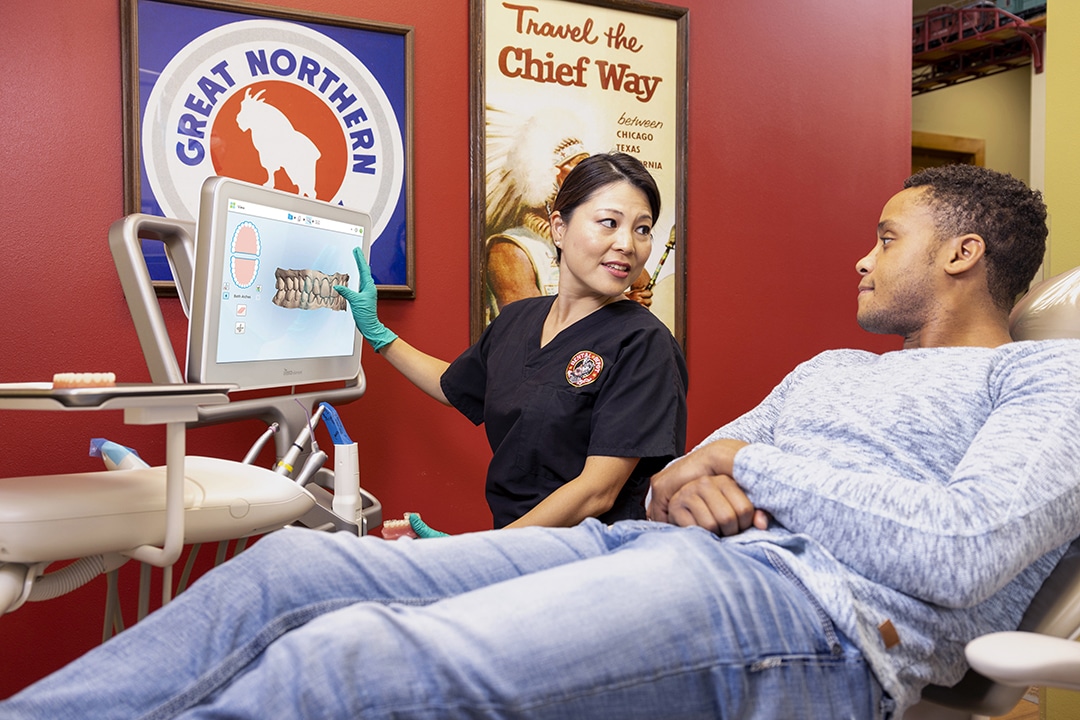Whether it’s removing wisdom teeth or preparing your mouth for dental implants, tooth extractions can be stressful and emotional. At Dental Depot of DFW, every member of our staff–from the front office to the back office, the dental assistants to the doctors–is committed to making tooth extraction as seamless and painless as possible. No matter which of our DFW metro locations you visit for your tooth extraction, you’ll find the same compassionate and caring service, along with affordable pricing, flexible scheduling, and state-of-the-art technology.
For tooth extractions that are part of a larger oral care plan, Dental Depot’s team of multidisciplinary professionals–including oral surgeons, prosthodontists, orthodontists, and general dentists like Dr. Himesh Kana–allows you to receive all the comprehensive dental services you need all in one convenient location. What’s more, these experts work together to help develop the best plan possible to meet your individual needs and goals, leveraging decades of combined experience and expertise in dental therapies, treatments, and techniques.

The type of extraction your tooth (or teeth) receives depends on several variables, including the location and type of tooth, the severity and anatomy of the damage, and whether or not the gum, jaw, sinuses, or other facial features are impacted.
Simple tooth extractions are for teeth that are visible and easily accessible, so they do not require incisions or sutures and can be performed in the general dentist’s office. Patients receive a local anesthetic at the site of the extraction and may also be offered Nitrous Oxide (N2O), also known as laughing gas, to make the procedure less stressful. Simple extractions remove the tooth and its roots and extraction sites typically heal fairly quickly.
Sometimes a tooth extraction is a little more complicated and requires an incision to remove the tooth. Surgical extractions are typically performed by an oral surgeon. Surgical extractions are necessary when the damaged tooth is either inaccessible or impacted (below the gum line), especially in instances such as:
Removing a tooth leaves a large hole in your gum, and caring for your teeth and gums after an extraction is essential to ensure proper healing. Most people recover from an extraction within a few days, but there are measures you can take to reduce any pain and prevent further complications.
The gap from your tooth will be packed with gauze. Leave this gauze in for several hours.
If your incision required stitches, your dentist will let you know if they need to be removed after a few days or if they will dissolve on their own.
In some cases, the blood clot in the socket is jarred loose, creating a dry socket that exposes the bones and nerves in the gum. A dry socket is painful and needs to be treated to prevent infection. Your dentist will repack the socket to allow a new clot to form. Signs you may have developed a dry socket include:
At Dental Depot in DFW, we believe every member of your family deserves quality, comprehensive dental care. In addition to highly trained dentists and dental hygienists, our experienced staff of dental professionals includes orthodontists, periodontists, and oral surgeons, allowing us to provide an expansive range of services, all at one location. When you visit any of our DFW area Dental Depot offices in Dallas, Lewisville, Aubrey, The Colony, McKinney, Arlington, and Highland Village, you can be confident you’ll receive the very best in oral treatment services, from routine cleanings and checkups to cosmetic and restorative dentistry.

Dr. Kana is dedicated in providing the highest level of care. He and the staff are committed to education and expanding knowledge. He has completed over 1,000 hours of continuing education. Dr. Kana hopes that being accessible to all of his patients, strong community feel and values, and strong patient/customer service is what will help our practice and community grow.
